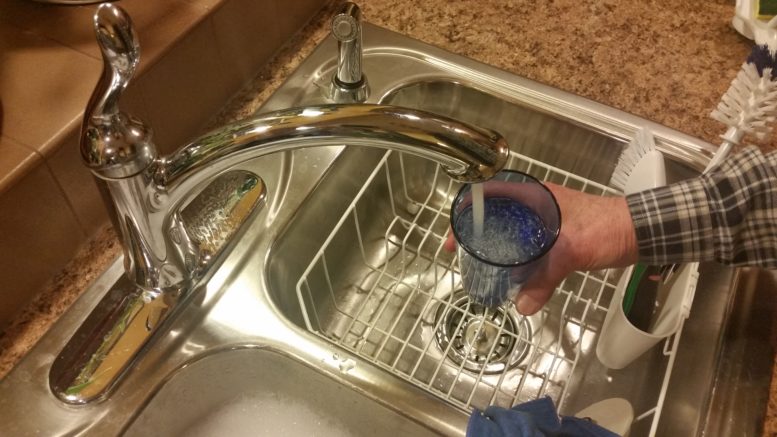By JAN LARSON McLAUGHLIN
BG Independent News
COVID relief funds may be used to identify lead water lines that linger in Wood County.
Earlier this month, the Wood County Commissioners Office sent a letter out to communities that have their own water systems, offering a chance to have their water lines checked for lead piping.
“The Wood County Commissioners are aware of the health concerns that are associated with public water service provided through lead service lines,” the letter stated. The health risks of lead in water can be significant and long-lasting, especially to young children.
The U.S. EPA has mandated all municipal water treatment providers to evaluate their distribution and delivery systems to ensure that any lead lines be identified by Jan. 1, 2024.
“Those entities with aging systems may find this to be a difficult and costly task,” the commissioners’ letter stated.
So the commissioners are offering $1 million of the county’s American Rescue Plan Act funds to implement a countywide lead service identification program. The project will accept bids and contract with a qualified contractor to expose the unidentified service lines through a low impact, vacuum excavation process and to log the information for all the systems.
Eight communities in Wood County operate their own water systems, and have been invited to join in this program, according to Wood County Administrator Andrew Kalmar. They are Bowling Green, Bradner, Fostoria, North Baltimore, Pemberville, Perrysburg, Tontogany and Wayne.
The other areas are served by Northwestern Water and Sewer District, which is helping to coordinate the project.
Since 1986, lead has been banned for use in water lines, and in the 1990s any known lead service lines in Bowling Green were replaced.
Bowling Green Public Utilities Director Brian O’Connell explained that the city is responsible for the portion of the waterline that extends to the curb stop, but the portion of the line going into a residence is the homeowner’s responsibility.
So while O’Connell is confident the lead lines in the city’s portion have been replaced, the same cannot be said of the portions that are the responsibility of homeowners.
Homes built before 1986 may have lead plumbing fixtures, since prior to then Ohio plumbing code allowed lead in fixtures.
The Ohio EPA is also offering grants of up to $50,000 to help identify possible lead lines still in use.
As a water provider, the city of Bowling Green must submit a waterline map to the Ohio EPA, showing the type of lines supplying homes – copper, galvanized iron, plastic or lead.
To do that, the city inspects some lines that are on homeowners’ properties. Those inspections in 2019 turned up a couple homes with lead lines.
Inside residences, potential sources of lead could be lead pipes, lead solder, or lead in plumbing fixtures.
There is no lead present in the drinking water as it leaves the city’s water treatment plant, O’Connell said. The city treats the water to reduce the potential for lead to contaminate the drinking water. This is achieved through a corrosion control treatment process and by adding orthophosphate to the water as a corrosion inhibitor.
“Hopefully that gives customers peace of mind about what is being delivered to them,” O’Connell said.

